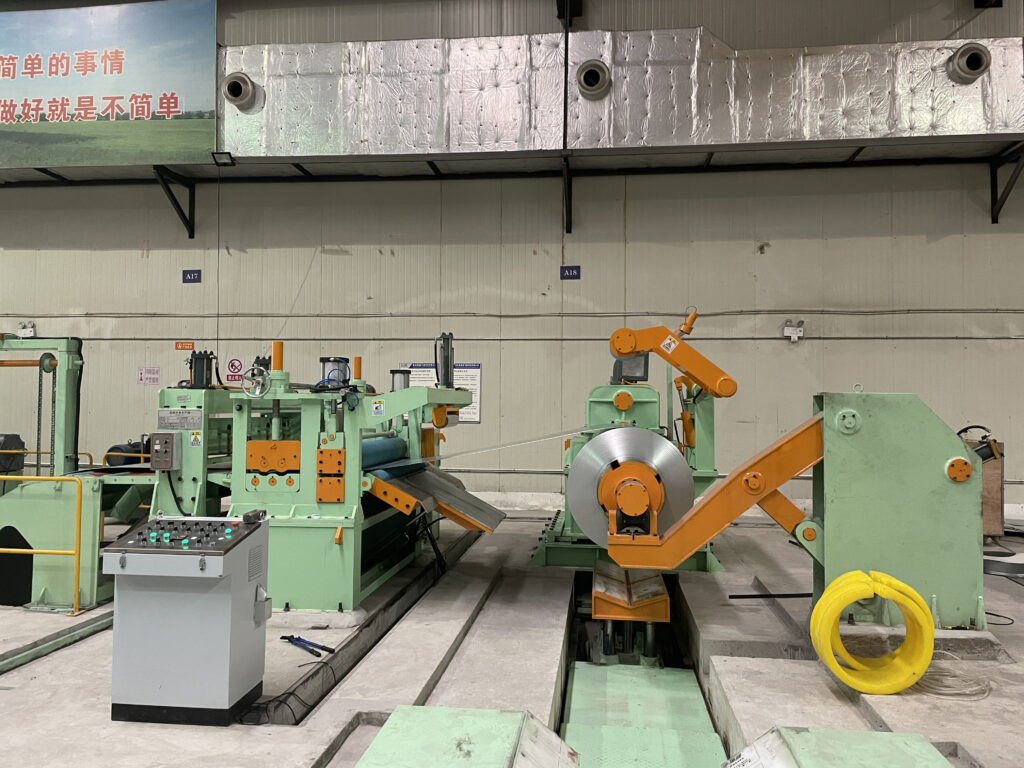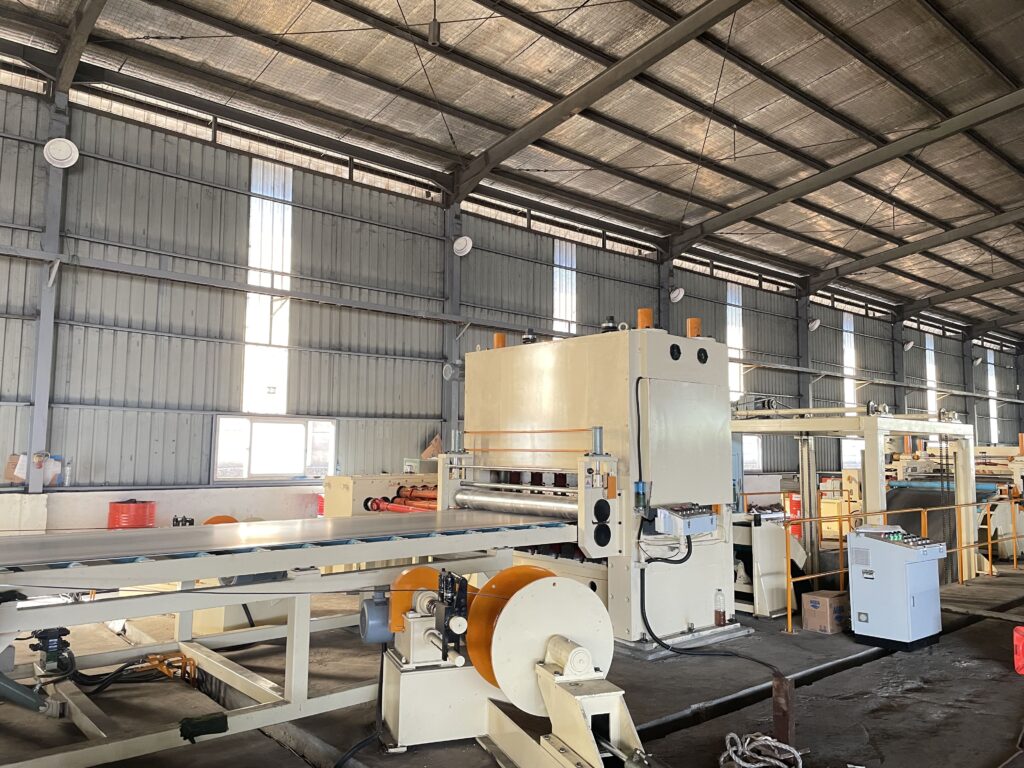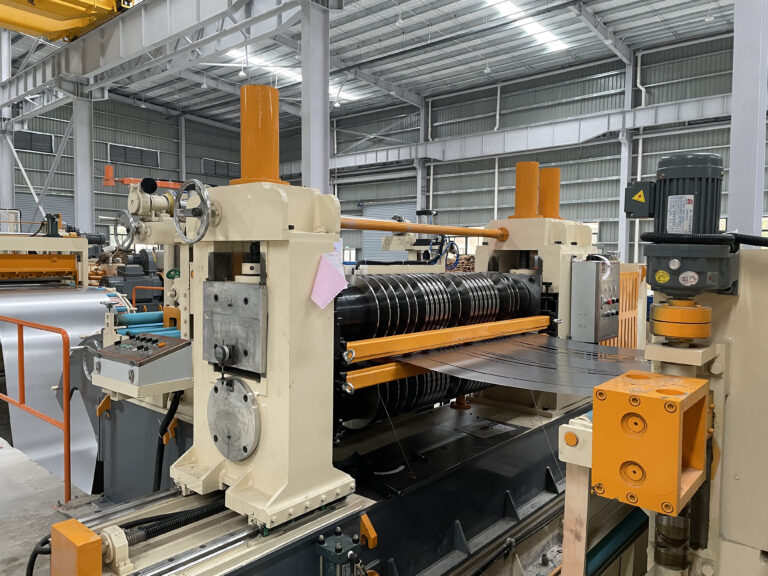Ultimate Guide to Slitting Lines: Precision Metal Processing for Manufacturers
In the fast-paced world of metal fabrication, slitting lines stand out as indispensable tools for transforming wide coils into precise, narrow strips. Whether you’re producing components for automotive frames or electronics casings, a reliable slitting line ensures efficiency, minimal waste, and consistent quality. At Maxdo Machine, we specialize in customizable slitting solutions tailored to your production needs. This guide breaks down everything from core operations to advanced configurations, helping B2B professionals optimize their workflows.
What Is a Slitting Line and How Does It Work?
A slitting line is a specialized metal processing system that uncoils wide metal strips, cuts them longitudinally into narrower widths, and recoils them for downstream use. This process is vital for industries handling materials like carbon steel, stainless steel, aluminum, and galvanized coils, where precision and speed directly impact profitability.

The workflow starts with loading a master coil—typically up to 20 tons—onto an uncoiler. From there, the material passes through tension controls to maintain flatness, followed by the slitter head where rotary knives perform the cuts. Edge trimmers remove imperfections, and recoiling units wind the strips under precise tension. Modern lines incorporate PLC automation for seamless operation, often achieving speeds of 30 to 200 meters per minute depending on material thickness (0.2mm to 12mm).
For a deeper dive into related equipment, explore our cut-to-length lines.
Step-by-Step Breakdown of the Slitting Process

Understanding the slitting process helps manufacturers select the right equipment and troubleshoot common issues. Here’s how it unfolds in a typical high-volume setup:
- Coil Loading and Unwinding: The operator mounts the coil on a mandrel-based uncoiler, which expands to grip the inner diameter (usually 508mm or 610mm). Hydraulic expansion ensures secure hold as the material feeds forward at controlled speeds, preventing telescoping or uneven unwinding.
- Entry Guide and Tensioning: As the strip enters, bridle rolls or loop accumulators apply tension to eliminate slack. This critical step aligns the material and compensates for variations in coil hardness, using sensors to maintain 5-20 tons of force.
- Precision Slitting: At the heart of the line, the slitter arbor holds upper and lower knives—often carbide-tipped for durability. For a 1300mm-wide coil, knives can be spaced as close as 10mm apart, producing up to 20 strips per pass. Quick-change systems reduce setup time to under 30 minutes.
- Edge Trimming and Scrap Handling: Scrap winders collect trimmed edges (typically 5-10mm per side), directing them to separate reels for recycling. This not only improves strip quality but also complies with sustainability standards in manufacturing.
- Recoiling and Quality Check: Individual recoils, synchronized via AC drives, wind strips with back tension to avoid buckling. Vision systems inspect for burrs or width deviations, rejecting non-conforming output in real time.
- Exit and Stacking: The finished coils are doffed automatically, ready for storage or further processing. Integrated software logs data for traceability, essential for ISO-certified operations.
This sequence minimizes downtime, with lines like our MD-1350 model handling thicknesses from 0.3mm to 3mm at speeds up to 80 m/min. For more on our lineup, check Maxdo’s slitting machine models.
Key Applications of Slitting Lines in Industry
Slitting lines shine in sectors demanding high-volume, precise material prep. In construction, they produce strips for HVAC ducts and roofing profiles from galvanized steel coils. Automotive suppliers rely on them for narrow reinforcements in chassis components, while the electronics industry uses ultra-thin aluminum slits for circuit boards.
Packaging manufacturers benefit from custom widths for can stock, and renewable energy firms slit copper for solar panel wiring. A real-world example: A Midwest fabricator upgraded to a Maxdo slitting line, boosting output by 40% for stainless steel strips in appliance manufacturing. These applications highlight the line’s role in reducing lead times and material costs.
For broader insights, the North American Association of Metal Fabricators offers resources on coil processing standards.
Advantages of Investing in a Modern Slitting Line
Why choose slitting over manual methods? First, precision: Tolerances as tight as ±0.05mm ensure downstream compatibility, cutting scrap by up to 15%. Speed is another edge—high-end lines process 100+ tons per shift without fatigue.
Adaptability stands out; configurable for various alloys and gauges, they handle everything from soft foils to high-tensile steels. Energy efficiency is improved with variable-frequency drives, and automation reduces labor needs by 50%. Long-term, ROI comes from durability: Quality lines last 20+ years with minimal maintenance, especially when using branded components like Siemens controls.
Compared to older setups, modern slitting lines lower total cost of ownership by optimizing material yield and integrating with ERP systems for just-in-time production.
Types of Slitting Lines: Standard vs. High-Precision
Not all slitting lines are equal. Manufacturers must match the type to their tolerances and throughput goals.
Standard Slitting Lines for High-Volume Production
These workhorses prioritize speed and robustness for everyday tasks. Equipped with basic rotary knives, they excel at shearing thicker materials like hot-rolled carbon steel (up to 12mm) into standard widths. Variable speed drives adjust from 50-150 m/min, ideal for bulk respooling in construction.
Key features include simple arbor designs for quick blade swaps and robust frames to handle 30-ton coils. They’re cost-effective for mid-tier fabricators, with changeover times under an hour.
High-Precision Slitting Lines for Demanding Applications
For aerospace or electronics, precision models use laser-aligned knives and cryogenic cooling to achieve burr-free edges on thin gauges (down to 0.1mm). They incorporate active tension control and non-contact measurement for sub-micron accuracy, supporting complex alloys like titanium.
These lines run at moderated speeds (up to 100 m/min) but deliver superior surface finishes, eliminating secondary deburring. They’re pricier upfront but pay off in high-value sectors through zero-defect output.
Comparing Standard and High-Precision Slitting Lines
| Feature | Standard Slitting Lines | High-Precision Slitting Lines |
|---|---|---|
| Accuracy | ±0.1mm widths | ±0.05mm or better |
| Edge Quality | Minor burrs possible; basic finishing | Burr-free; ready for direct use |
| Speed | 100-200 m/min | 50-120 m/min |
| Ideal Materials | Thick carbon/galvanized steel | Thin alloys like aluminum/copper |
| Cost Efficiency | Low initial investment; high throughput | Higher upfront; excels in premium runs |
| Applications | Bulk fabrication, construction | Electronics, aerospace components |
This comparison underscores how precision lines justify their cost in specialized workflows. Learn more about slitting basics on Wikipedia’s slitting machine page.
Slitting Lines vs. Other Coil Processing: Key Differences
How does a slitting line stack up against a blanking line? While both start with coils, slitting creates continuous longitudinal strips for recoiling and further rolling—perfect for linear products. Blanking, conversely, punches discrete shapes crosswise, suiting stamped parts like automotive panels.
Against cut-to-length (CTL) lines, slitting focuses on width reduction rather than length shearing. Many operations combine them; for instance, slit strips feed into a CTL for sheeting. This versatility makes slitting a foundational step in integrated lines.
Choosing the Right Slitting Line for Your Operation
Selecting a slitting line boils down to coil specs, output volume, and budget. Assess your max width (e.g., 850mm for compact models like our MD-850) and required speed. Factor in automation levels—entry-level lines suit small shops, while fully integrated ones fit large-scale plants.
Consult with experts early; at Maxdo, we offer free audits to align equipment with your KPIs. With rising demand for sustainable manufacturing, opt for lines with energy-efficient drives and recyclable scrap systems.
Ready to enhance your production? Contact Maxdo Machine today for a customized slitting solution that drives efficiency and growth.




